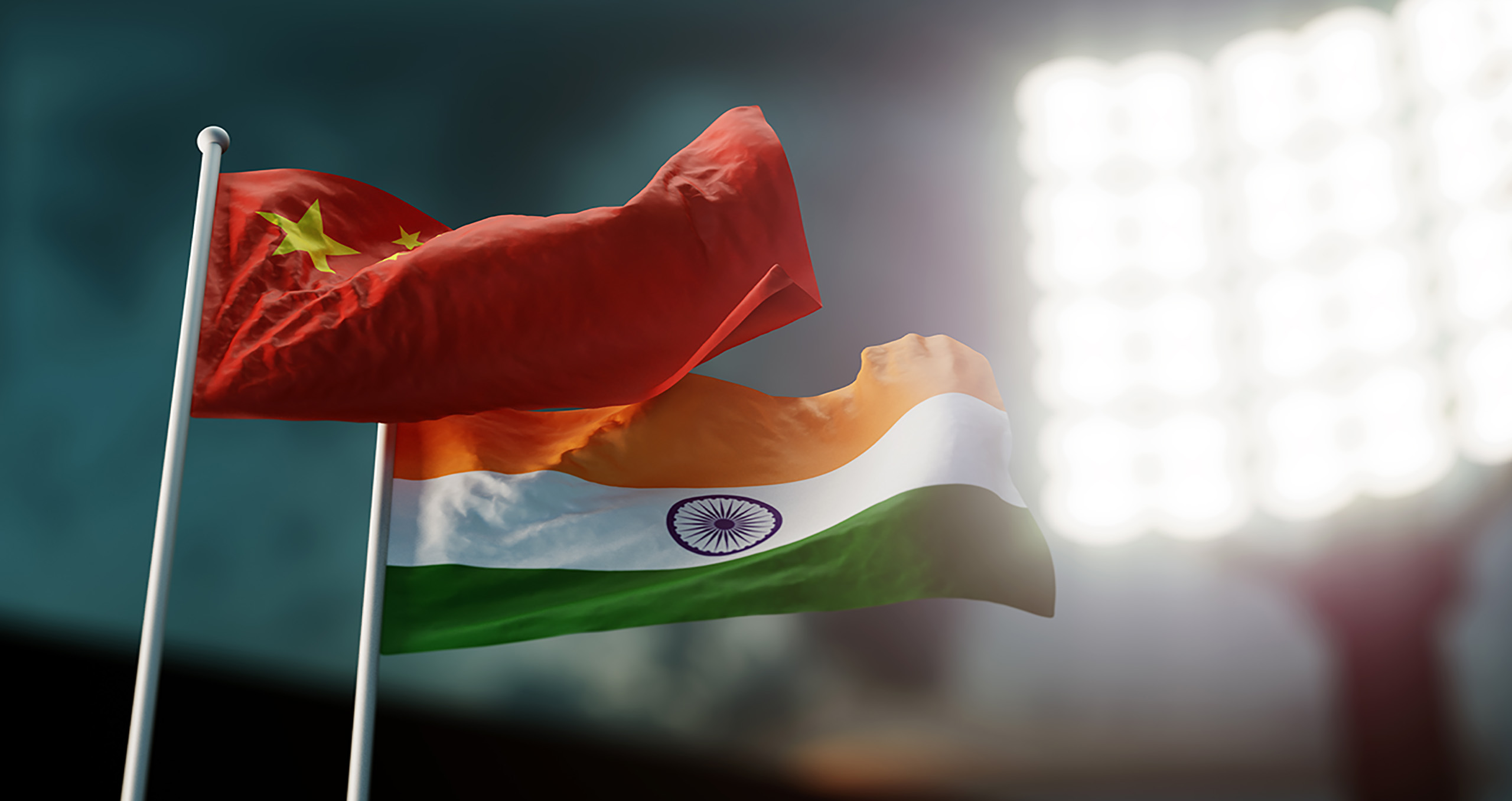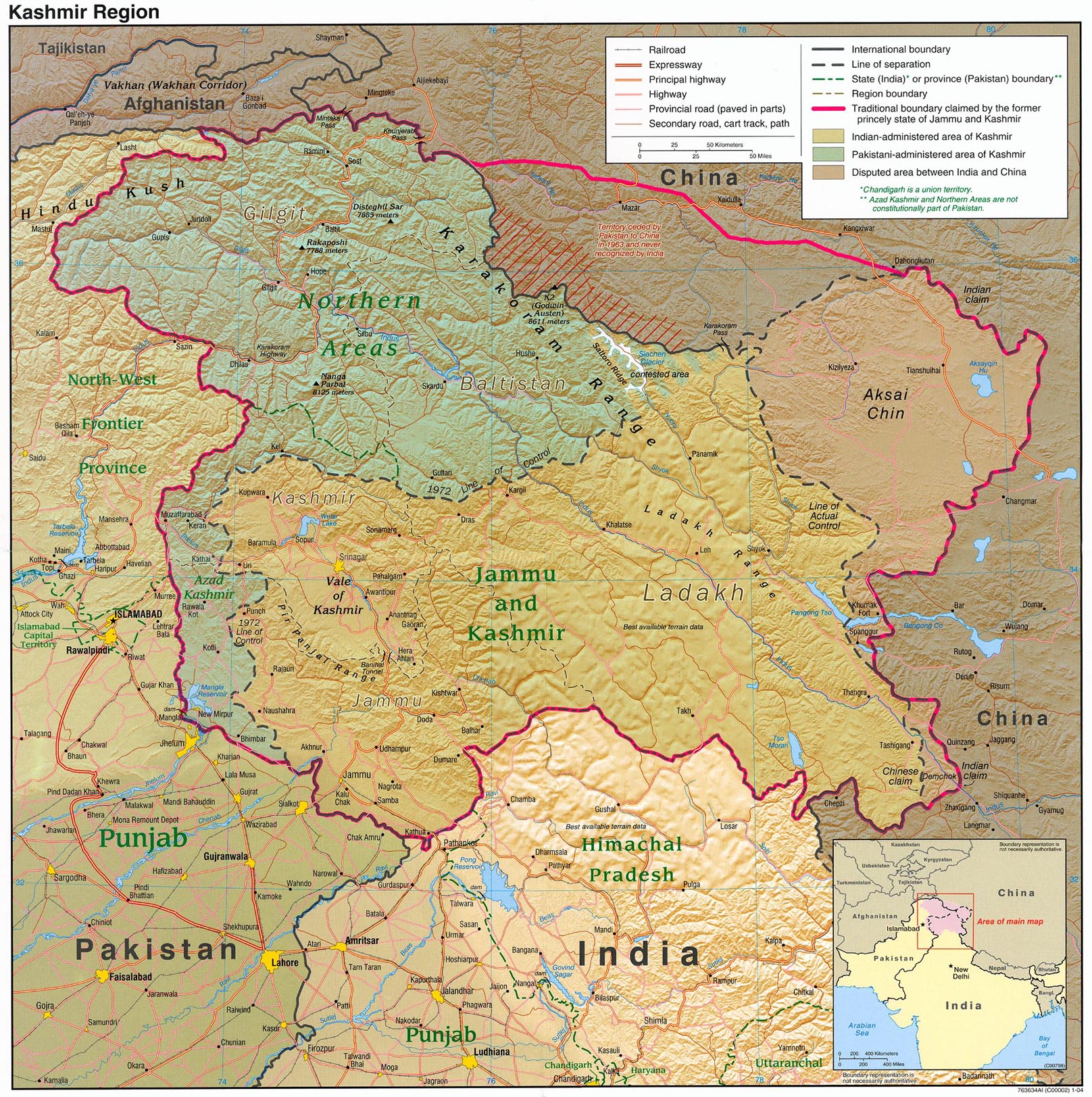Stubborn nuclear powers fail to compromise on winter withdrawal

China and India flags waving in wind. Image By Vladimir Zotov (Shutterstock, 2020).
China and India fail to compromise on winter withdrawal
On May 5, 2020, a clash between Indian and Chinese soldiers broke out in East Ladakh and North Sikkim, both regions bordering Tibet. (Banerjee, 2020). This clash led up to stand offs throughout 2020. In June of the same year, an aggressive skirmish led to the deaths of 20 Indian soldiers (Biswas, 2020) and of 43 Chinese soldiers (India Today Web Desk, 2020). Reports indicate that the bloody confrontation happened with no shots fired, and instead the fighting took place with rocks and clubs (Miglani & Ghoshal, 2020).
This kind of border dispute between China and India is nothing new. In October 1962, Chinese soldiers invaded the same territories that have been witnessing 2020’s events. These regions have been subjected to contentions ever since Britain accorded India its independence, which included some previous Chinese territories as per the McMahon line, which was agreed in 1914 between the colonial power and Tibet (Shakya, 1999). The Seventeen Point Agreement between the People’s Republic of China and the de facto, then, government of Tibet in 1951 gave China control of Tibet (Goldstein, 1989). Thus, this gave the country a reason to argue that the McMahon line intruded on their national territory. After the ceasefire in November 1962, the Chinese People’s Liberation Army (PLA) stayed in the territories won during the Indo-China war, leading to regular border disputes ever since.
In 1993 both countries signed an agreement to maintain the Line of Actual Control (United Nations Peacemaker, 1993). However, the borders are still not demarcated (Al Jazeera and News Agencies, 2020), and no maps have been exchanged between both armies (Snehesh, 2020). It is, therefore, complicated to implement the international law and agreement that the neighbors, had decided on. On top of that, India’s position in the area has been complicated even more due to China’s support for Pakistan’s territorial claims (Sornarajah & Wang, 2019). Indian officials claimed that the Pakistani military tried to infiltrate the Indian-controlled part of northern Kashmir in November 2020 (Bukhari & Naqash, 2020). India is currently in between two agitated neighbors, one of which has been making headlines for the huge number of territorial disputes it has been involved in (China and the South China Sea, Senkaku/Diaoyu Islands, etc.) (Krishnankutty, 2020).
Indian media has indicated that a temporary agreement has been made between China and India to end the standoff and retreat the troops before the winter climate makes it impossible to do so. Both armies are heavily present in the area, but strategically speaking, bar nuclear confrontation, India seems to have the upper hand due to its experience in conflicts in the area with Pakistan, as well as for being stationed in higher and more strategic positions (Duhalde, 2020). This tactical advantage has given India the backup needed to lead talks and negotiations with Chinese officials, which have been the source of the promise the armies would vacate the area (Purohit, 2020). China state media’s stance on the matter, however, shows that the PLA may not agree to the withdrawal of troops, out of fear India would not follow through (Liu, 2020). To prove the establishment of buffer zones, Indian officials have been discussing about patrolling the sensitive zone with drones to ensure verification (Miglani & Ghoshal, 2020).
Yet, after all these reports, a compromise has failed to take place. The current stalemate is wearing down both sides, but it seems China is “trying to use a war of attrition to wear down the Indian forces” (Srikanth Kondapalli to DW, 2020), as India has less technical support (Krishnan, 2020).
As talks between military officials have led to nothing, we could, perhaps, expect some changes after President Modi and President Xi met on November 13-15, 2020 at the ASEAN Summit, on the 17th at the BRICS summit, and on the 21-22nd at the G-20. They had not yet met since the deadly June confrontation. So, a direct discussion between the two leaders could unblock the situation in the near future (Krishnan, 2020).

Article by
Alexandros Messimeris

Categories



